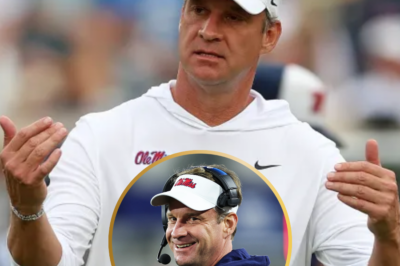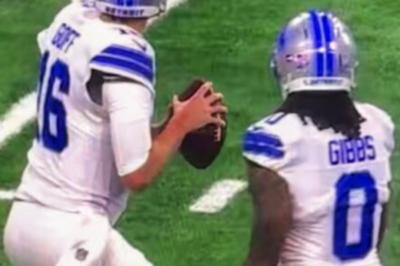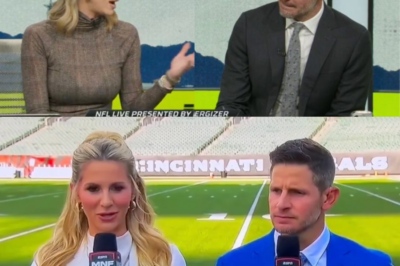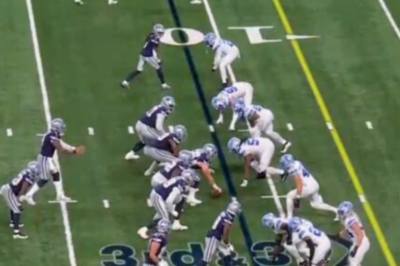Social Media Reacts to Student Reporter Talia Baia’s Choice of Short Orange Dress
In the ever-evolving landscape of social media, opinions are as abundant as pixels on a screen.
The latest subject to spark a flurry of online discourse is none other than student reporter Talia Baia, whose choice of attire—a short orange dress—has become a focal point for debate.
What began as a simple wardrobe choice has now turned into a broader conversation about professionalism, individual expression, and societal expectations.
A Dress That Sparked Conversations
Talia Baia, a student journalist known for her dedication to reporting and her growing presence in the media world, recently wore a vibrant short orange dress while covering an assignment.
While her reporting skills and enthusiasm for journalism were evident, it was her outfit that became the unintended centerpiece of attention.
Social media platforms, particularly Twitter and Instagram, quickly erupted with opinions ranging from praise for her bold fashion sense to criticism questioning its appropriateness for professional settings.
The reactions have been diverse, with some applauding Baia’s confidence and individuality, while others suggested that longer dresses might better align with traditional notions of professionalism in journalism.
The incident raises a pertinent question: how much does appearance matter in the world of reporting, and where should the line be drawn between personal expression and professional decorum?
The Role of Social Media in Shaping Perceptions
Social media has become a powerful tool for shaping public opinion, often amplifying voices that might otherwise go unheard.
In this case, platforms like Twitter served as a virtual roundtable where users expressed their views on Baia’s outfit.
Some argued that her attire was perfectly acceptable in modern journalism, emphasizing the importance of focusing on her reporting skills rather than her wardrobe.
Others felt that the dress was too casual or revealing for the professional context in which she was working.
One Twitter user commented, “Talia Baia is talented, no doubt about it. But journalism is still a profession, and attire should reflect that.”
Meanwhile, another user countered, “Why are we even discussing her dress? She’s doing her job and doing it well. Let’s focus on her work instead of what she’s wearing.”
Fashion vs. Professionalism: A Longstanding Debate
The discussion surrounding Baia’s dress is not new. The intersection of fashion and professionalism has long been a topic of debate across industries.
In journalism, where credibility and authority are paramount, appearance can play a significant role in how reporters are perceived by their audience.
Traditional norms often dictate conservative attire—blazers, tailored pants, and modest dresses—as the standard for reporters aiming to convey professionalism.
However, as societal norms evolve, so too does the definition of “appropriate” attire.
Younger generations are increasingly challenging traditional expectations by embracing individuality and self-expression in their professional lives.
For many, clothing choices are an extension of their personality and values, rather than merely a compliance with workplace norms.
The Double Standard in Professional Attire
The scrutiny over Baia’s dress also highlights the double standards often faced by women in professional settings.
Female reporters are frequently subjected to more intense judgment regarding their appearance compared to their male counterparts.
While male journalists may face occasional comments about their attire, it is rare for their clothing choices to overshadow their work.
This disparity underscores a broader issue: the tendency to prioritize appearance over competence when evaluating women’s contributions in professional environments.
Baia’s situation serves as a reminder that such biases continue to persist, even as society makes strides toward gender equality.
The Impact on Young Professionals
For young professionals like Baia, incidents like these can be both challenging and instructive.
On one hand, public scrutiny can be overwhelming, especially for individuals who are still establishing their careers. On the other hand, such experiences can offer valuable lessons about navigating public perception and maintaining confidence in one’s abilities.
Baia has yet to publicly address the controversy surrounding her dress, but her silence speaks volumes about her focus on her work rather than the noise surrounding her appearance.
It remains to be seen whether she will respond or let her reporting continue to speak for itself.
Balancing Individuality and Professionalism
The broader question arising from this incident is how individuals can balance personal expression with professional expectations.
In industries like journalism, where credibility is key, finding this balance can be particularly tricky.
While it is important to respect workplace norms, it is equally vital to allow room for individuality and authenticity.
For aspiring journalists and professionals in other fields, Baia’s story serves as an opportunity to reflect on what professionalism truly means in today’s world.
Is it defined solely by outward appearance, or does it encompass qualities like competence, dedication, and integrity?
As workplaces become more diverse and inclusive, these questions are becoming increasingly relevant.
Moving Beyond Appearance-Based Judgments
As social media continues to influence public discourse, it is crucial to remember that appearance should never overshadow substance.
Talia Baia’s choice of dress may have sparked conversations online, but her work as a student reporter deserves equal—if not greater—attention.
Her dedication to journalism and her ability to navigate the challenges of reporting as a young professional are far more significant than the color or length of her attire.
Ultimately, the incident serves as a reminder that societal expectations around appearance are constantly evolving.

While debates about professionalism and fashion will likely persist, it is essential to prioritize meaningful contributions over superficial judgments.
The reaction to Talia Baia’s short orange dress underscores the complex interplay between fashion, professionalism, and societal norms.
As social media continues to amplify voices and shape perceptions, incidents like these highlight the need for thoughtful discussions about what truly matters in professional settings.
Baia’s story is not just about a dress; it is about the broader challenges faced by young professionals navigating public scrutiny in an increasingly digital world.
Whether one agrees or disagrees with the opinions expressed online, it is clear that conversations about professionalism must evolve alongside societal norms.
“Next, you can get a longer skirt,” someone suggested.
“Bro working hard on that eye contact lol,” someone else joked.
“I bet your farts smell so good,” said a third. We’re sure he’s wrong…
“You think a male reporter would catch flack if he interviewed women athletes in their locker room wearing nothing?” another user asked.
As journalism continues to adapt to modern times, perhaps it is time to redefine what professionalism looks like—not just in terms of attire but also in terms of values like authenticity, competence, and dedication.
In the end, these qualities will always matter far more than the length of a hemline or the choice of a color palette.
News
Steelers fans won’t believe this FREE AGENT SNUB! Find out why one DB said “NO THANKS” to Josh Allen and the Bills… CLICK to see if fans are FROZEN in anger or siding with Slay!
Steelers fans won’t believe this FREE AGENT SNUB! Find out why one DB said “NO THANKS” to Josh Allen and the…
SHOCKING: He left them for their biggest rival. Now, Ole Miss insiders are DROPPING BOMBS on Lane Kiffin.The dirty secrets and locker room drama are spilling out. You won’t believe what’s being leaked.
SHOCKING: He left them for their biggest rival. Now, Ole Miss insiders are DROPPING BOMBS on Lane Kiffin.The dirty secrets…
Detroit Lions Head Coach Dan Campbell Executes One of the Most Questionable Plays in Recent NFL History During Crucial Must-Win Game [VIDEO]
Detroit Lions Head Coach Dan Campbell Executes One of the Most Questionable Plays in Recent NFL History During Crucial Must-Win…
EXCLUSIVE: The family attorney for missing high school head coach Travis Turner just broke his silence—and what he revealed will leave you speechless. You won’t believe what they found.
EXCLUSIVE: The family attorney for missing high school head coach Travis Turner just broke his silence—and what he revealed will…
SHOCKING LIVE TV MOMENT: Dan Orlovsky CAUGHT ON CAMERA in an unblinking stare at Laura Rutledge during the broadcast. Fans are SPEECHLESS!
SHOCKING LIVE TV MOMENT: Dan Orlovsky CAUGHT ON CAMERA in an unblinking stare at Laura Rutledge during the broadcast. Fans…
NFL OFFICIATING IN SHAMBLES: Watch the moment refs STOLE a historic Lions win from Jared Goff with a call so bad it left the entire league in disbelief.
NFL OFFICIATING IN SHAMBLES: Watch the moment refs STOLE a historic Lions win from Jared Goff with a call so…
End of content
No more pages to load















